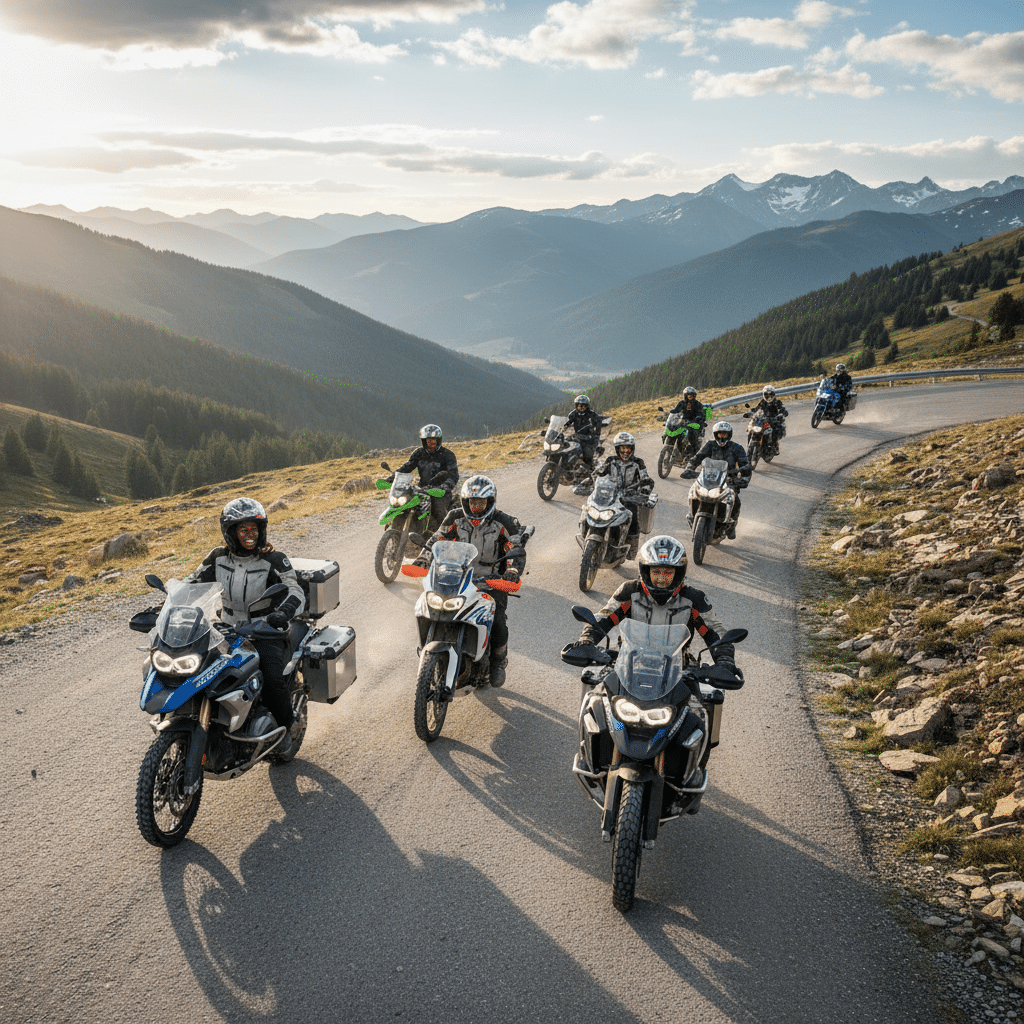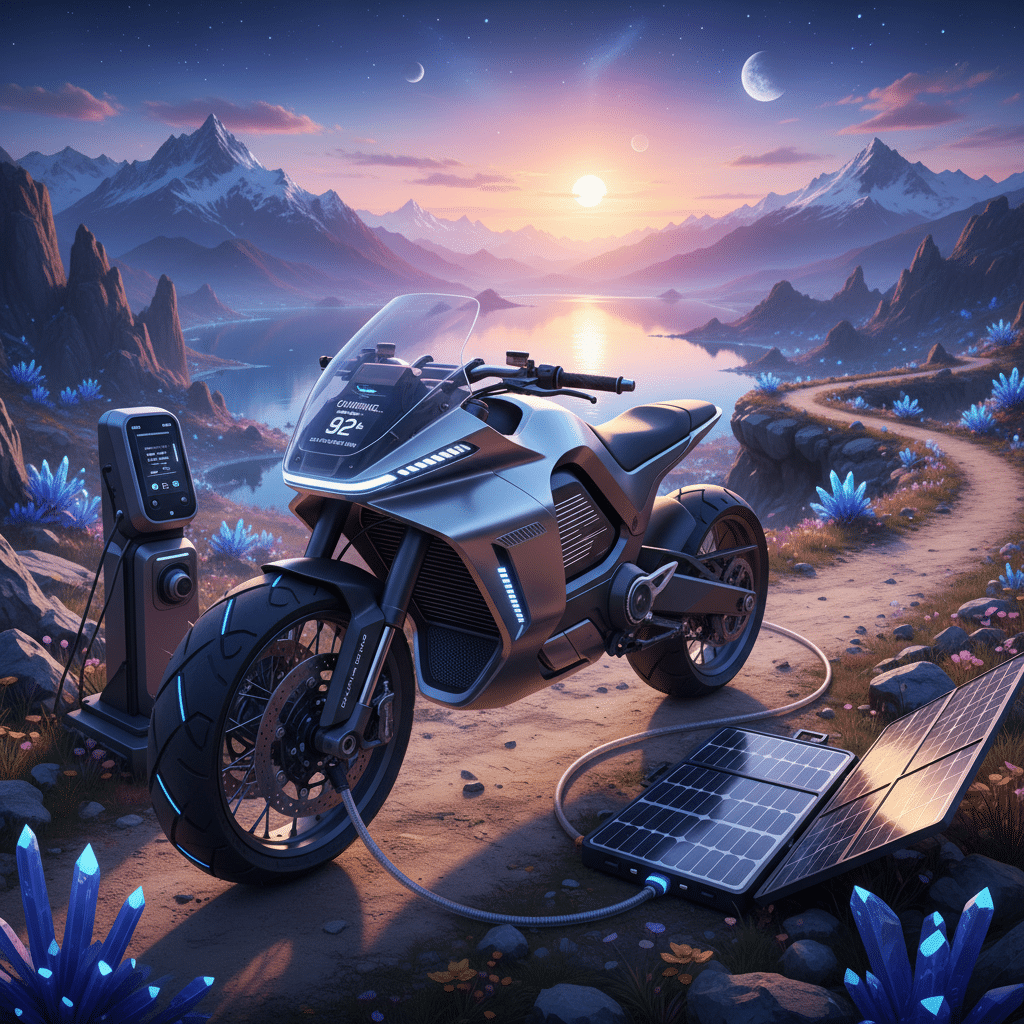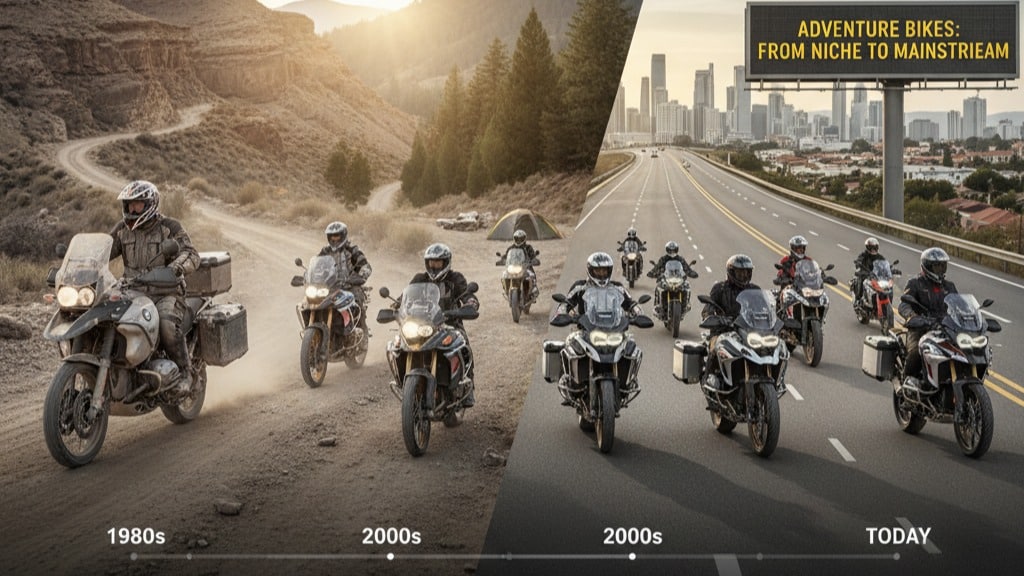The rumble starts low, a promise of distant horizons, then swells into an irresistible invitation. This is the sound of an adventure bike, a machine that has transcended its rugged, niche origins to become a true mainstream marvel. Once the exclusive domain of hardcore globetrotters and Dakar Rally aspirants, adventure bikes have roared into the popular consciousness, redefining what a motorcycle can be and where it can take you. This isn’t just a trend; it’s a revolution in two-wheeled freedom, an emblem of exploration that speaks to the innate human desire for discovery.
For decades, motorcycling was largely compartmentalized: cruisers for the open road, sportbikes for speed, dirt bikes for trails, and commuters for daily grind. But somewhere along the line, a brilliant hybrid emerged, borrowing the best attributes from each category. The result? A bike capable of tackling everything from smooth asphalt highways to challenging gravel roads, rocky tracks, and even sandy dunes. This remarkable versatility is the secret sauce behind the thrilling rise of adventure bikes: From niche to mainstream, captivating riders across the globe. They offer not just transportation, but an experience – a boundless journey limited only by your imagination.
The Genesis of a Global Phenomenon: From Desert Sands to Daily Drives
The story of the adventure bike isn’t a sudden explosion; it’s an evolution, a gradual refinement born from necessity and a thirst for exploration. Its roots stretch back to the grueling endurance rallies of the mid-20th century, particularly the legendary Paris-Dakar Rally. These epic races, traversing thousands of kilometers of unforgiving desert, demanded motorcycles that were robust, reliable, and capable of high speeds on loose surfaces while also carrying enough fuel and supplies for long stretches. Early pioneers often modified existing street bikes or large dirt bikes, beefing up suspensions, adding larger fuel tanks, and reinforcing frames.
Manufacturers quickly took note of these modifications and the burgeoning demand for bikes that could handle both tarmac and rough terrain. Iconic models like the BMW R80 G/S, launched in 1980, are often credited with truly kickstarting the modern adventure bike era. The “G/S” stood for Gelände/Straße – German for “off-road/road” – perfectly encapsulating its dual-purpose DNA. It was a revelation: comfortable enough for long-distance touring, yet surprisingly capable when the pavement ended. Riders found they no longer had to choose between tarmac comfort and dirt capability; they could have both. This balance struck a chord with a growing number of riders eager to explore beyond the beaten path without sacrificing the ability to cover vast distances on highways.

This initial spark ignited a slow but steady fire. Over the next few decades, other manufacturers began to develop their own interpretations, learning from rally racing and adapting technologies from both street and dirt bike segments. The bikes grew more refined, more powerful, and significantly more capable. The notion of “adventure” began to broaden, moving from extreme, desert-crossing expeditions to accessible weekend explorations and even daily commuting with an added dose of excitement. The rise of global motorcycle travel narratives, shared through books, documentaries, and later, the internet, further fueled this expansion, showcasing the incredible journeys these machines could undertake. These stories inspired countless individuals to consider embarking on their own two-wheeled adventures, leading to a significant increase in demand for these versatile machines.
What Makes an Adventure Bike Stand Out? Anatomy of Versatility
At its core, an adventure bike is defined by its ability to perform admirably across a spectrum of riding conditions. This isn’t achieved by accident; it’s a result of deliberate design choices that prioritize versatility, durability, and rider comfort.
Robust Construction and Suspension
Adventure bikes typically feature strong, durable frames built to withstand the rigors of off-road riding, often incorporating protective elements like crash bars and bash plates. Their suspension systems are key to their dual-purpose nature. They boast long-travel suspension, offering significantly more wheel travel than a standard street bike. This increased travel allows the bike to absorb larger impacts from potholes, rocks, and bumps encountered off-road, while also providing a smoother, more comfortable ride on poorly maintained roads. The suspension components themselves are often heavy-duty, designed for endurance and adjustability to suit various terrains and loads.
Ergonomics for Endurance
Rider comfort is paramount on an adventure bike, especially considering the long hours and varied conditions riders might face. They usually feature an upright riding position, which is less fatiguing than the leaned-forward stance of a sportbike or the laid-back cruiser posture. This allows for better visibility in traffic and easier transition to standing on the pegs when tackling technical off-road sections. Wide handlebars provide excellent leverage for steering and control, while seat designs are often wide and plush, though some models lean towards a more enduro-style seat for aggressive off-road maneuvering.
Engine Power and Gearing
Adventure bike engines are often characterized by a broad, usable powerband rather than peak horsepower figures. They deliver strong torque at lower RPMs, which is crucial for crawling over obstacles off-road and for accelerating efficiently when fully loaded. While engine sizes vary wildly, from 300cc singles to massive 1200cc+ twins, the common thread is reliable, tractable power. Gearing is also optimized to provide both highway cruising capability and low-speed control for tricky off-road situations. For riders interested in the general upkeep of such complex machines, understanding basics like how to check and change motorcycle oil is fundamental.
Fuel Range and Luggage Capacity
Long-distance travel is in the DNA of adventure bikes. Consequently, they are equipped with significantly larger fuel tanks than most other motorcycle types, often allowing for ranges exceeding 300-400 kilometers on a single fill-up. This extended range reduces range anxiety, especially in remote areas. Furthermore, adventure bikes are designed with integrated mounting points for luggage systems – panniers, top boxes, and soft bags – allowing riders to carry essential gear for multi-day trips or even extended expeditions.
Pros and Cons
| Pros | Cons |
|---|---|
| – Unparalleled Versatility: Excels on pavement, gravel, and dirt. | – Higher Seat Height: Can be intimidating for shorter riders. |
| – Exceptional Comfort: Upright ergonomics and long-travel suspension. | – Heavier and Bulkier: Less nimble than pure dirt bikes or street bikes. |
| – Long-Distance Capability: Large fuel tanks and robust luggage options. | – Cost of Entry: Generally more expensive than single-purpose bikes. |
| – Robust and Durable: Built for tough conditions and sustained use. | – Maintenance Complexity: More components for off-road durability. |
| – Vast Community & Lifestyle: Strong sense of camaraderie among riders. | – Accessory Rabbit Hole: Can be very expensive to fully kit out. |
The Tectonic Shift: Why Adventure Bikes Went Mainstream
The transition of adventure bikes from a niche pursuit to a dominant segment in the global motorcycle market is not just about the bikes themselves. It’s a confluence of factors reflecting changing rider preferences, technological advancements, and a broader cultural shift.
The Influence of Social Media and Media Personalities
In the digital age, seeing is believing, and social media has been an unparalleled catalyst. Platforms like YouTube, Instagram, and TikTok are awash with stunning videos and photos of riders traversing breathtaking landscapes on adventure bikes. These visual narratives, often crafted by charismatic adventurers and influencers, showcase the dream: exploring remote corners of the world, overcoming challenges, and experiencing unparalleled freedom. Stories of epic journeys, such as those documented by Ewan McGregor and Charley Boorman in “Long Way Round,” captivated millions and directly inspired a generation of riders to seek out their own adventures. This exposure democratized the idea of adventure motorcycling, making it seem less daunting and more attainable.
Technological Advancements and Rider Aids
Modern adventure bikes are packed with sophisticated technology that makes them more accessible and safer than ever before. Electronic rider aids such as traction control, multiple riding modes (Rain, Road, Off-Road), cornering ABS, and even semi-active electronic suspension systems are common. These technologies assist riders in diverse conditions, building confidence and mitigating risks. For instance, a novice rider can feel more secure tackling a slippery gravel road knowing their bike’s traction control is working to prevent wheelspin. This technological sophistication has broadened the appeal, inviting riders of all skill levels to consider an adventure bike. The evolution of automotive technology, often driven by motorsports, shows how racing through time created today’s everyday technology, and adventure bikes are no exception.

Shifting Rider Demographics and Preferences
The motorcycle market is evolving. While traditional segments still hold appeal, there’s a growing demographic of riders, including older, more affluent individuals, who prioritize comfort, versatility, and the ability to explore. They might not be looking for the fastest lap times or the lowest cruiser stance, but rather a machine that can comfortably tour with a passenger and luggage on a Friday, then confidently tackle a dirt road shortcut on Saturday. Adventure bikes fit this bill perfectly, offering a “one bike does it all” solution that appeals to a pragmatic yet adventurous mindset.
The “Go Anywhere, Do Anything” Philosophy
The inherent versatility of adventure bikes aligns perfectly with a contemporary lifestyle that values experiences over possessions. These bikes are not just about reaching a destination; they’re about the journey itself, the ability to deviate from the planned route, and the freedom to explore spontaneously. They promise the ability to commute through urban jungles, escape for a weekend of spirited twisty road riding, and then vanish down a remote track into the wilderness, all on the same machine. This “go anywhere, do anything” ethos resonates deeply with modern adventurers.
Manufacturer Investment and Proliferation of Models
Seeing the exponential growth, motorcycle manufacturers across the spectrum have heavily invested in the adventure bike segment. What began with a few pioneering models has blossomed into a diverse marketplace, offering adventure bikes in nearly every size, price point, and performance level imaginable. From lightweight, single-cylinder machines perfect for beginners or challenging trails, to gargantuan, electronically sophisticated tourers designed for continent-crossing journeys, there’s an adventure bike for almost everyone. This increased competition and choice have driven innovation, improved features, and made adventure bikes more accessible than ever before.
Iconic Rides and Unforgettable Journeys
The adventure bike segment is rich with legendary machines that have shaped its trajectory. The BMW GS series, for example, remains a benchmark, continuously evolving to set new standards in performance and technology. KTM’s range of Adventure bikes brought a distinct, performance-oriented, off-road bias to the segment, attracting riders who craved more aggressive dirt capability. Honda’s Africa Twin rekindled a legendary nameplate, offering a balanced blend of off-road prowess and on-road comfort. Yamaha’s Ténéré series, especially the 700, has captivated riders with its rugged simplicity and incredible value, harking back to the spirit of classic rally bikes. These bikes, and many others, are not just machines; they are partners in adventure, each with a unique character and following.

Consider the incredible story of riders tackling the Dakar Rally, an event that truly tests the mettle of both machine and rider. For a deeper dive into this epic challenge, you can explore articles like The Dakar Rally: An Off-Road Adventure. It’s this spirit of pushing boundaries that adventure bikes embody, even for riders whose “adventure” might be a challenging commute or a weekend camping trip.
Embracing the Adventure Riding Lifestyle
Owning an adventure bike is often more than just owning a motorcycle; it’s buying into a lifestyle. It’s about community, exploration, and self-reliance.
The Brotherhood (and Sisterhood) of the Trail
The adventure riding community is incredibly supportive and inclusive. Whether it’s online forums, local riding groups, or international rallies, adventure riders readily share knowledge, offer assistance, and forge lasting friendships. The shared experience of tackling challenging terrain, overcoming obstacles, and reveling in stunning natural beauty creates a unique bond. This camaraderie is a powerful draw, making the adventure lifestyle even more appealing. For those interested in unique two-wheeled events, exploring unusual motorsport racing series from around the world can provide insight into the diverse world of motorcycle culture.
Skills and Preparation for the Open Road (and Beyond)
While modern adventure bikes are accessible, truly mastering them, especially off-road, requires skill and practice. Many riders invest in specialized training courses to develop techniques for handling varied terrain, emergency braking on loose surfaces, and recovering a dropped bike. Beyond riding skills, a key aspect of the adventure lifestyle is preparedness. This includes understanding basic motorcycle maintenance – like knowing the importance of regular maintenance intervals for your motorcycle – carrying essential tools, packing strategically, and having navigation skills. The self-sufficient nature of adventure travel is a significant part of its allure.
Gear Up for the Journey
Appropriate gear is non-negotiable for adventure riding. This isn’t just about safety; it’s about comfort and endurance. High-quality adventure suits offer protection from impacts, abrasion, and the elements, often with waterproofing and ventilation for temperature regulation. Robust adventure boots provide ankle support and protection for both on-road and off-road riding. Helmets designed for adventure often incorporate features like a peak (visor) for sun protection and a wider eye-port for better visibility, accommodating goggles for dusty conditions. And, of course, a reliable GPS or smartphone with mapping capabilities is essential for navigation, ensuring you can find your way, even when the path less traveled disappears altogether.
The Future is Bright: Innovation on the Horizon
The adventure bike segment shows no signs of slowing down. Manufacturers continue to push boundaries, developing lighter, more powerful, and even more technologically advanced machines. We’re seeing a trend towards greater specialization within the segment, with some models leaning more towards pure off-road performance and others prioritizing long-distance touring comfort.
The advent of electric motorcycle technology is poised to have a significant impact. While the challenges of battery range and charging infrastructure are more pronounced for long-distance adventure travel, electric adventure bikes promise silent operation, instant torque, and zero emissions, opening up new possibilities for exploring pristine natural environments. Imagine traversing a serene forest trail with only the sound of tires on gravel and the wind in your helmet – an entirely new dimension of adventure. As we look ahead, the blend of traditional ruggedness with cutting-edge innovation will ensure that adventure bikes remain at the forefront of motorcycling, inspiring new generations to discover the thrill of the open road and beyond.

The Call of the Wild is Stronger Than Ever
The transformation of adventure bikes from niche machines to mainstream icons is a testament to their inherent brilliance and the enduring human spirit of exploration. They offer a unique blend of practicality, performance, and pure, unadulterated adventure that few other vehicles can match. Whether you dream of circumnavigating the globe, exploring local backroads, or simply adding a thrilling new dimension to your daily commute, an adventure bike stands ready to be your ultimate companion.
So, if the thought of leaving the predictable behind and forging your own path ignites a spark within you, perhaps it’s time to answer the call. The world is vast, full of incredible sights and experiences, and an adventure bike is arguably the best way to uncover them. Get out there, explore, and let the journey unfold. Your next great adventure is waiting, just a twist of the throttle away.
Frequently Asked Questions
What exactly defines an adventure bike?
An adventure bike is a versatile motorcycle designed to comfortably handle both paved roads and various off-road terrains like gravel, dirt, and light trails. Key characteristics include long-travel suspension, an upright riding position, robust construction, large fuel tanks, and provisions for luggage, prioritizing comfort and capability for long-distance exploration.
Why have adventure bikes become so popular recently?
Their rise to the mainstream is due to several factors: increased visibility through social media and travel documentaries, advanced rider aids and technology making them more accessible, a shift in rider demographics towards comfort and versatility, and significant investment by manufacturers leading to a wider range of models.
Are adventure bikes suitable for beginner riders?
While some larger adventure bikes can be intimidating due to their weight and height, many manufacturers now offer smaller, lighter adventure models (e.g., 300-650cc) that are very suitable for beginners. Their upright riding position and forgiving engines can make them easier to learn on than sportbikes or cruisers, provided a rider is comfortable with the seat height.
Can I really take an adventure bike off-road?
Absolutely! They are designed for it. While some models are more off-road biased than others, all adventure bikes are built to handle unpaved roads and trails. The degree of off-road capability depends on the specific model, tire choice, and rider skill, but they excel where street bikes fear to tread.
What kind of maintenance do adventure bikes require?
Like all motorcycles, adventure bikes require regular maintenance, often with an emphasis on chain care, tire pressure (especially when switching between on-road and off-road), and suspension checks due to the varied terrains they tackle. Following the manufacturer’s recommended service intervals and performing routine checks like oil changes are crucial for longevity and reliability.
What’s the typical fuel range of an adventure bike?
Adventure bikes are known for their large fuel tanks, which typically provide a range of 300 to 500 kilometers (185 to 310 miles) or more on a single tank. This extended range is essential for exploring remote areas where fuel stops can be infrequent.
What should I look for when buying an adventure bike?
Consider your primary riding intentions (more road or more off-road), your skill level, budget, and desired engine size. Test ride several models to find one that fits your ergonomics and provides the right balance of power and handling for your needs. Also, factor in the availability of aftermarket accessories and local dealer support.



